August 30th, 2011
It would be difficult, if not impossible, to find a college campus that doesn’t have Internet. College students use the Internet for research, communication, and other educational activities. Of course, students also use the Internet for social media, news, and even online gambling, activities that can be fun and even enriching, but when overused, become a real problem. Some college students suffer from Internet addiction, unable to step away from the computer or put down mobile devices even for a day. Eighty-four percent of college counselors agree that Internet Addiction Disorder is legitimate, but at the same time, 93% of them have not been fully trained to diagnose Internet addiction, and 94% have insufficient training for Internet addiction treatment. The result? Falling grades, physical problems, and even clinical addiction. Internet addiction is a real problem for college students, and we’ve shared several trends that are worrisome.

-
Students have feelings similar to drug and alcohol addiction
Two hundred students were asked to abstain from all media for 24 hours, and were then asked to blog about their experiences. The words the students used to describe their feelings during the restriction period were typically the same words associated with a substance abuse addiction: "withdrawal, frantically craving, very anxious, antsy, miserable, jittery, crazy." It seems that these students are addicted to media, particularly in its online form. This is disturbing, but not surprising, as studies have already shown that Google can actually change your brain.
-
College students are especially susceptible to Internet Behavior Dependence
A college student case study revealed that college students are a "population of special concern" when it comes to Internet addiction, and they are disproportionately vulnerable due to psychological and environmental factors in their lives. When faced with an Internet addiction, college students have a hard time forming their identity and building intimate relationships. Online, students can "develop relationships devoid of the anxiety found in face-to-face relationships," and they "can take on any persona they desire, without fear of judgment on appearance or personal mannerism, and can avoid racial and gender prejudice." This type of adaptive behavior tends to diminish the social capacity of college students, leaving them unprepared for the development of real world relationships.
-
Online poker is prevalent on college campuses
Online poker joins two addictions together: gambling and online interaction, so its use on college campuses is especially worrisome. The University of Pennsylvania predicts that over 20% of college students play online poker at least once a month, and you can typically see lots of students playing online poker on a college campus. Although it can be a fun game, and many students may be able to maintain healthy lives while enjoying playing online poker, some simply can’t. At the University of Pennsylvania, researchers noted that among college gamblers that played weekly, over half of them had a serious problem with the habit. In some cases, students fail out of classes or gamble their tuition away, even turning to crime to pay debts created by online poker.
-
Students can’t go 24 hours without the Internet
When 1,000 college students took part in an international study on electronic media, they were asked to go without media for 24 hours. But many students in the study were not up to the challenge. A majority of students did not actually go without media for 24 hours, giving in and checking in with their phones or email. Students confessed, "I sat in my bed and stared blankly. I had nothing to do," and "Media is my drug; without it I was lost. How could I survive 24 hours without it?" The study revealed a physical dependency on media, especially Facebook and mobile phones. Students recognized that typing the address for their favorite sites had become muscle memory: "It was amazing to me though how easily programmed my fingers were to instantly start typing "f-a-c-e" in the search bar. It’s now muscle memory, or instinctual, to log into Facebook as the first step of Internet browsing." Other students recognized physical signs of withdrawal, sharing that "I would feel irritable, tense, restless and anxious when I could not use my mobile phone. When I couldn’t communicate with my friends, I felt so lonely, as if I was in a small cage in a solitary island."
-
Students are surfing, not studying
Students who spend a lot of time online are likely to neglect their studies. In many cases, students who performed well in school before developing an Internet addiction allowed their grades to crash, only then realizing the impact of Internet dependency. Counselors across the US have identified the problems of excessive Internet use, including: lack of sleep and excess fatigue, declining grades, less investment in relationships with a boyfriend or girlfriend, withdrawal from all campus social activities and events, general apathy, edginess, or irritability when off-line, and rationalizing that what they learn on the Internet is superior to their classes. Students may not realize the problem until serious trouble happens: "They flunk out of college. Their real-life girlfriend breaks up with them because all they ever want to do is play on the Net. Their parents explode when they find out their huge investment in their child’s college education is going to support all-night Internet sessions." By then, it may be too late to recover the damage.
-
The Internet is everywhere
Ninety-eight percent of students own a digital device. This prevalence throws gasoline on a spark: students who are already susceptible to Internet addiction have access online in computer labs, their dorm, and other places around campus, and on top of that, they have the Internet in their pocket at all times. Knowing this, it’s not surprising to find out that 38% of students say they can’t go more than 10 minutes without using a digital device, contributing to an ever-present existence of the Internet on campus.
-
Internet use can physically change your brain
In a study of Chinese college students who were online for 10 hours a day, six days a week, morphological changes in the structure of their brains were noted. Scientists found reductions in the size of the "dorsolateral prefrontal cortex, rostral anterior cingulate cortex, supplementary motor area and parts of the cerebellum as high as 10-20%." Although at the same time, there was an increase in the "density of the right parahippocampal gyrus and a spot called the left posterior limb of the internal capsule." These changes happen to the detriment of short term memory and decision-making abilities.
-
Many students need intervention and treatment for their addiction, and it can lead to depression
We might joke about "Crackberries," but for some, the Internet is truly a significant concern. A study published in BMC Medicine indicated that 4% of the students who participated in their survey met the criteria for having a problem with online addiction. But perhaps the more disturbing fact from this study is that there is a "significant association between pathological Internet use and depression in college students," putting a population that is already at risk for mental instability in a precarious position.
-
Cyberbullies go to college, too
Although most of the news on cyberbullying focuses on adolescents, the fact is that cyberbullies exist on the college campus as well. It’s not surprising, considering how much time students spend online, and how much impact a college student’s online presence can have. In fact, a University of New Hampshire study reported that one in 10 students was abused online. College students have been the target of sexually violent rants, and one professor at BU had to persuade Facebook to remove his page, which he did not set up himself. Researchers believe that students are especially vulnerable to cyberstalking because "they live in a relatively closed community where class schedules, phones, and e-mails are easy to find." And sites like Rate My Professors may be helpful for students choosing classes, but some comments may be hurtful for faculty members. Thierry Guedj, adjunct professor of psychology at Metropolitan College reports, "It really hurts faculty members badly when they read these things about themselves online. People have become quite depressed about it."
-
Tech conditions can be dangerous to your health
College Candy’s list of tech conditions that can be dangerous to your health seems to be written as a joke, citing "Blackberry Neck," and "Glazey Dazey Lazy Eye," but these conditions really can be a problem. Using the Internet too much can lead to a sedentary lifestyle, a decline in physical fitness, and as a result, weight gain. Heavy users report carpal tunnel syndrome, eye strain, and headaches. Sleep disturbances can also stem from Internet addiction, as Internet use may lead to later bedtimes and less restful sleep. Additionally, researchers believe that the light from computer screens may affect circadian rhythms, creating a risk factor for insomnia.















 The makers behind Wego Kite Tubes probably thought they had a real winner on their hands. What's more fun and exciting than being pulled behind a speeding boat and then taking flight? But this 10-foot-wide inflatable tube that becomes airborne when you pull the handles seems to have been even more dangerous than it sounds. The product warns to "never kite higher than you are willing to fall," but users apparently didn't know that the fall could end up propelling them into the water at 50 mph as the tube unexpectedly nose dives. At least two people died using the tube and many more have broken their necks or backs, and punctured lungs from the impact. The kite tubes have since been recalled.
The makers behind Wego Kite Tubes probably thought they had a real winner on their hands. What's more fun and exciting than being pulled behind a speeding boat and then taking flight? But this 10-foot-wide inflatable tube that becomes airborne when you pull the handles seems to have been even more dangerous than it sounds. The product warns to "never kite higher than you are willing to fall," but users apparently didn't know that the fall could end up propelling them into the water at 50 mph as the tube unexpectedly nose dives. At least two people died using the tube and many more have broken their necks or backs, and punctured lungs from the impact. The kite tubes have since been recalled. Even to uncoordinated adults, hammocks can be trouble. There's always the chance that the pesky thing will swing out from under you as you're trying to rest your rump. But combining the clumsiness of kids and a poorly built hammock is a recipe for disaster. The EZ Sales Mini Hammock was designed to be relaxing for children who just need a break from their hectic lives, but ended up strangling 12 children and injuring others as they got tangled in the hammock while trying to get out. The company neglected to put a spreader bar on the ends that would keep the hammock from closing on the user like a Venus fly trap. The hammock was recalled in 1996 -- 11 years after it was first sold.
Even to uncoordinated adults, hammocks can be trouble. There's always the chance that the pesky thing will swing out from under you as you're trying to rest your rump. But combining the clumsiness of kids and a poorly built hammock is a recipe for disaster. The EZ Sales Mini Hammock was designed to be relaxing for children who just need a break from their hectic lives, but ended up strangling 12 children and injuring others as they got tangled in the hammock while trying to get out. The company neglected to put a spreader bar on the ends that would keep the hammock from closing on the user like a Venus fly trap. The hammock was recalled in 1996 -- 11 years after it was first sold. Even if a toy's not made to be eaten, there's a good chance it will end up in a child's stomach at some point. Just ask any X-ray technician. But most toys won't cause death once they're there. Magnetix Magnetic Building Sets include small magnetic balls and cylinders that you can use to build cool structures, but if they are swallowed, the magnets cause all kinds of problems. They can stick together in the intestines and cause a blockage, or cause holes in the intestines when they are drawn together. At least one child died from Magnetix, another punctured his lung after inhaling pieces of the toy, and several others were injured.
Even if a toy's not made to be eaten, there's a good chance it will end up in a child's stomach at some point. Just ask any X-ray technician. But most toys won't cause death once they're there. Magnetix Magnetic Building Sets include small magnetic balls and cylinders that you can use to build cool structures, but if they are swallowed, the magnets cause all kinds of problems. They can stick together in the intestines and cause a blockage, or cause holes in the intestines when they are drawn together. At least one child died from Magnetix, another punctured his lung after inhaling pieces of the toy, and several others were injured. Lawn darts are some of those toys that you can't believe were actually produced and marketed for children, but people liked to live on the edge in the '70s and '80s. The large, sharp darts that you were supposed to aim at a ring on the ground were weighted on the pointy end, making them nice weapons to use on the neighborhood kids. More than 6,500 people reported lawn dart injuries before they were recalled and made illegal in 1988. There were at least four deaths. One person, a 7-year-old girl, was killed when she was hit in the skull by a neighbor's stray yard dart.
Lawn darts are some of those toys that you can't believe were actually produced and marketed for children, but people liked to live on the edge in the '70s and '80s. The large, sharp darts that you were supposed to aim at a ring on the ground were weighted on the pointy end, making them nice weapons to use on the neighborhood kids. More than 6,500 people reported lawn dart injuries before they were recalled and made illegal in 1988. There were at least four deaths. One person, a 7-year-old girl, was killed when she was hit in the skull by a neighbor's stray yard dart. When parents bought their children the Aqua Dots bead sets, they probably thought they were giving the kids a nice, safe craft project to do. There can't be any danger in small beads that you put together to make nice designs, right? Even when kids accidentally swallowed the beads (or put them in their mouths thinking they might be candy), there didn't seem to be any risk of choking. Instead, these kids ended up unconscious for a couple of hours. One child even had to be hospitalized for almost a week. When ingested, a chemical in the beads apparently turns into gamma hydroxybutyrate, also known GHB or the date rape drug. You better believe this product was recalled when the makers figured it out.
When parents bought their children the Aqua Dots bead sets, they probably thought they were giving the kids a nice, safe craft project to do. There can't be any danger in small beads that you put together to make nice designs, right? Even when kids accidentally swallowed the beads (or put them in their mouths thinking they might be candy), there didn't seem to be any risk of choking. Instead, these kids ended up unconscious for a couple of hours. One child even had to be hospitalized for almost a week. When ingested, a chemical in the beads apparently turns into gamma hydroxybutyrate, also known GHB or the date rape drug. You better believe this product was recalled when the makers figured it out. Though it was only sold for one year, from 1951 to 1952, the Gilbert U-238 Atomic Energy Lab has rightfully earned its place among the most dangerous toys ever made. The science kit came with four kinds of uranium ore, a radioactive substance used for nuclear energy. It also included a Geiger counter, an electroscope, and a comic book, Dagwood Splits the Atom. The set wasn't recalled; instead, its short life is thought to be a consequence of its high price of $50. There are no known injuries or deaths from the Atomic Energy Lab, but there's no doubt if it had continued to be sold, there would eventually be dozens of cases of radiation poisoning.
Though it was only sold for one year, from 1951 to 1952, the Gilbert U-238 Atomic Energy Lab has rightfully earned its place among the most dangerous toys ever made. The science kit came with four kinds of uranium ore, a radioactive substance used for nuclear energy. It also included a Geiger counter, an electroscope, and a comic book, Dagwood Splits the Atom. The set wasn't recalled; instead, its short life is thought to be a consequence of its high price of $50. There are no known injuries or deaths from the Atomic Energy Lab, but there's no doubt if it had continued to be sold, there would eventually be dozens of cases of radiation poisoning. This toy was revived in the early '90s with much safer results, but in the '60s, it was dangerous fun. Creepy Crawlers was basically a hot plate with molds that you poured goo into. When it was done, you had plastic bugs to hide around the house. And even though you were supposed to wait seven or more minutes and then use tongs to touch the mold, little boys can't be relied upon to be patient and follow directions. Lots of burns and blisters came about from these popular play things. But worse than burning little kids, Creepy Crawlers' fumes were potentially toxic since people didn't know too much back then about melted PVC or lead paint, which were probably components of the toy.
This toy was revived in the early '90s with much safer results, but in the '60s, it was dangerous fun. Creepy Crawlers was basically a hot plate with molds that you poured goo into. When it was done, you had plastic bugs to hide around the house. And even though you were supposed to wait seven or more minutes and then use tongs to touch the mold, little boys can't be relied upon to be patient and follow directions. Lots of burns and blisters came about from these popular play things. But worse than burning little kids, Creepy Crawlers' fumes were potentially toxic since people didn't know too much back then about melted PVC or lead paint, which were probably components of the toy. The Yo-Yo Ball is the lazy kid's alternative to the yo-yo. It's just a squishy ball, sometimes filled with water, attached to an elastic string, so there's no talent needed to make it come back to you. You apparently do need talent, however, to keep it from strangling you. Hundreds of parents have reported that their children have nearly been killed when the cord got tangled around their necks. The accidents may happen when children swing the ball over their head like a lasso, which is clearly the most fun way to use it. This toy is banned in France, Canada, and the United Kingdom, but authorities in the U.S. said the risk is low so they wouldn't recall it.
The Yo-Yo Ball is the lazy kid's alternative to the yo-yo. It's just a squishy ball, sometimes filled with water, attached to an elastic string, so there's no talent needed to make it come back to you. You apparently do need talent, however, to keep it from strangling you. Hundreds of parents have reported that their children have nearly been killed when the cord got tangled around their necks. The accidents may happen when children swing the ball over their head like a lasso, which is clearly the most fun way to use it. This toy is banned in France, Canada, and the United Kingdom, but authorities in the U.S. said the risk is low so they wouldn't recall it. Besides the risk of shooting your eye out, BB guns, like the Red Ryder made by Daisy, have been known to cause lots of other injuries and death. Though the ones marketed just to children during most of the 20th century were only powerful enough to cause minor injuries, gun manufacturers began making more powerful air guns for adults in the '70s. Since then, the distinction between adult BB guns and toy ones has been hard for the average person to see. Many toy stores and department stores still carry BB guns, and children are using BB guns that have proven to be powerful enough to kill children. Remember: BB guns don't shoot eyes out, little kids who don't know how to use BB guns do.
Besides the risk of shooting your eye out, BB guns, like the Red Ryder made by Daisy, have been known to cause lots of other injuries and death. Though the ones marketed just to children during most of the 20th century were only powerful enough to cause minor injuries, gun manufacturers began making more powerful air guns for adults in the '70s. Since then, the distinction between adult BB guns and toy ones has been hard for the average person to see. Many toy stores and department stores still carry BB guns, and children are using BB guns that have proven to be powerful enough to kill children. Remember: BB guns don't shoot eyes out, little kids who don't know how to use BB guns do. The traditional hacky sack may be for laid-back hippie types, but this footbag is not for the weak of heart. This hacky sack is made out of Kevlar, soaked in kerosene, and then lit on fire before you play with it. Though the makers of the Fire Footbag only claim shoelaces as casualties so far, it's only a matter of time before someone meets an unfortunate end because of this hacky sack. It's only banned in Australia for now, so this toy's still available for those brave or stupid enough to buy it.
The traditional hacky sack may be for laid-back hippie types, but this footbag is not for the weak of heart. This hacky sack is made out of Kevlar, soaked in kerosene, and then lit on fire before you play with it. Though the makers of the Fire Footbag only claim shoelaces as casualties so far, it's only a matter of time before someone meets an unfortunate end because of this hacky sack. It's only banned in Australia for now, so this toy's still available for those brave or stupid enough to buy it..jpg)
 Daughter of Theon of Alexandria, a mathematics professor and librarian at the Library of Alexandria, Hypatia was familiar with the academic world from a very early age. As she grew up, she would become a renowned scholar in her own right and eventually became the head of the Platonist school at Alexandria, teaching mathematics, philosophy and astronomy. She was such an important scholar that some historians even claim her death (murder at the hands of a mob of monks) marked the beginning of the end for Classical thought.
Daughter of Theon of Alexandria, a mathematics professor and librarian at the Library of Alexandria, Hypatia was familiar with the academic world from a very early age. As she grew up, she would become a renowned scholar in her own right and eventually became the head of the Platonist school at Alexandria, teaching mathematics, philosophy and astronomy. She was such an important scholar that some historians even claim her death (murder at the hands of a mob of monks) marked the beginning of the end for Classical thought. The Dark Ages weren’t all bad. In fact, some women actually managed to become respected scholars, most notably Trotula of Salerno. She was instrumental in helping revive interest in Ancient Greek science during the medieval period, and she and her "ladies of Salerno" were renowned throughout Italy for their medical expertise and scholarship. Working at the School of Salerno, Trotula taught both male and female students and wrote medical texts like The Diseases of Women, which were used well into the 16th century.
The Dark Ages weren’t all bad. In fact, some women actually managed to become respected scholars, most notably Trotula of Salerno. She was instrumental in helping revive interest in Ancient Greek science during the medieval period, and she and her "ladies of Salerno" were renowned throughout Italy for their medical expertise and scholarship. Working at the School of Salerno, Trotula taught both male and female students and wrote medical texts like The Diseases of Women, which were used well into the 16th century. In modern times, Laura Bassi holds the honor of being the first female professor. A physicist, she was one of the first women to receive a university degree from the University of Bologna (and Europe in general). While there are no archives of her scientific work, she was well-respected among the literati of the time, including Voltaire, Paolo Frisi and Alessandro Volta. In 1731, Bassi would be appointed professor of Anatomy and in 1733 was given the chair of philosophy. While her teaching opportunities were limited in her career’s early years, over time she successfully petitioned the university for more responsibilities and lectures, which she balanced while caring for her eight children. By age 65, she was the chair of experimental physics at the Institute of Sciences, an impressive feat at any point in history — but especially so in the 1700s.
In modern times, Laura Bassi holds the honor of being the first female professor. A physicist, she was one of the first women to receive a university degree from the University of Bologna (and Europe in general). While there are no archives of her scientific work, she was well-respected among the literati of the time, including Voltaire, Paolo Frisi and Alessandro Volta. In 1731, Bassi would be appointed professor of Anatomy and in 1733 was given the chair of philosophy. While her teaching opportunities were limited in her career’s early years, over time she successfully petitioned the university for more responsibilities and lectures, which she balanced while caring for her eight children. By age 65, she was the chair of experimental physics at the Institute of Sciences, an impressive feat at any point in history — but especially so in the 1700s. An Italian linguist, mathematician and philosopher, Agnesi is created with writing the first book on differential and integral calculus. She also holds a special place in history for being appointed to the faculty of mathematics, natural philosophy and physics at the University of Bologna by the pope. She was not to hold this position for long, however, as her father’s 1752 death motivated her to dedicated her life to charity over academic pursuits.
An Italian linguist, mathematician and philosopher, Agnesi is created with writing the first book on differential and integral calculus. She also holds a special place in history for being appointed to the faculty of mathematics, natural philosophy and physics at the University of Bologna by the pope. She was not to hold this position for long, however, as her father’s 1752 death motivated her to dedicated her life to charity over academic pursuits.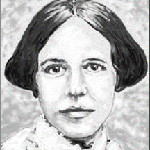 Maria Mitchell holds the honor of being the first female astronomer in the United States. Primarily self-taught, she gained a love of the cosmos while working with her father in the small observatory he built on their roof. Her rise to fame started in 1847 when she spotted a comet, and in 1848 the American Academy of Arts and Sciences voted her the first female member. In 1865, Mitchell accepted a position as professor of astronomy and director of the college observatory at Vassar College, where she continued her research and inspired other young women to pursue careers in the science until her 1888 retirement.
Maria Mitchell holds the honor of being the first female astronomer in the United States. Primarily self-taught, she gained a love of the cosmos while working with her father in the small observatory he built on their roof. Her rise to fame started in 1847 when she spotted a comet, and in 1848 the American Academy of Arts and Sciences voted her the first female member. In 1865, Mitchell accepted a position as professor of astronomy and director of the college observatory at Vassar College, where she continued her research and inspired other young women to pursue careers in the science until her 1888 retirement.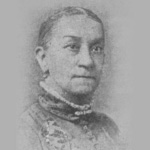 Sarah Jane wasn’t just one of the first female professors in the U.S., but one of the first African-American women to get a full professorship as well. A graduate of Oberlin College, she was among the first African-American female college grads, and would gain an esteemed position at Wilberforce University in 1866. Owned and operated by African-Americans, the school gave her the freedom to inspire young people to complete their educations and accomplish bigger and better things. Early would go on to serve as the principal and matron of the school and taught at the secondary school level for almost four decades.
Sarah Jane wasn’t just one of the first female professors in the U.S., but one of the first African-American women to get a full professorship as well. A graduate of Oberlin College, she was among the first African-American female college grads, and would gain an esteemed position at Wilberforce University in 1866. Owned and operated by African-Americans, the school gave her the freedom to inspire young people to complete their educations and accomplish bigger and better things. Early would go on to serve as the principal and matron of the school and taught at the secondary school level for almost four decades.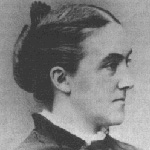 Getting into MIT is hard for anyone, even today, but it was especially difficult for a bright young woman named Ellen Richards in the late 1800s. The school did not admit females at the time, but made a special exception for Richards, who was both the first ever to attend MIT and receive a degree in chemistry. She would go on not only to be the first female professor at MIT, but one of the most esteemed and respected industrial and environmental chemists during her lifetime.
Getting into MIT is hard for anyone, even today, but it was especially difficult for a bright young woman named Ellen Richards in the late 1800s. The school did not admit females at the time, but made a special exception for Richards, who was both the first ever to attend MIT and receive a degree in chemistry. She would go on not only to be the first female professor at MIT, but one of the most esteemed and respected industrial and environmental chemists during her lifetime.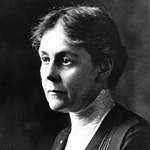 Alice Hamilton dreamed of one day becoming a doctor when she was a young girl. While her boarding school gave little attention to science instruction, Hamilton got special tutoring that enabled her to gain admittance into the University of Michigan Medical School. After graduation, Hamilton and her sister (a classical scholar) traveled to Germany and encountered a great deal of prejudice for their gender, as numerous universities refused their graduate studies applications. After finally being accepted in Frankfurt and working as a research assistant at Johns Hopkins, Hamilton was appointed in 1897 as a professor of pathology at the Women’s Medical School of Northwestern University. The appointment was short-lived, but springboarded her into an impressive industrial medicine career. In 1919, she became the first female professor ever hired at Harvard University.
Alice Hamilton dreamed of one day becoming a doctor when she was a young girl. While her boarding school gave little attention to science instruction, Hamilton got special tutoring that enabled her to gain admittance into the University of Michigan Medical School. After graduation, Hamilton and her sister (a classical scholar) traveled to Germany and encountered a great deal of prejudice for their gender, as numerous universities refused their graduate studies applications. After finally being accepted in Frankfurt and working as a research assistant at Johns Hopkins, Hamilton was appointed in 1897 as a professor of pathology at the Women’s Medical School of Northwestern University. The appointment was short-lived, but springboarded her into an impressive industrial medicine career. In 1919, she became the first female professor ever hired at Harvard University.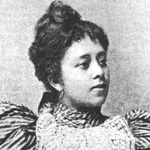 Lutie Lytle was one of the first African-American women to earn a law degree, graduating from the Central Tennessee Law School and passing the licensing exam in 1897– only the third African-American woman in the U.S. to achieve this honor. She practiced for a year before joining the faculty at Central Tennessee in 1898, the first female law instructor anywhere in the world. While Lytle would only serve for one year, she continued to practice law and push greater racial equality in the United States until her 1950 death.
Lutie Lytle was one of the first African-American women to earn a law degree, graduating from the Central Tennessee Law School and passing the licensing exam in 1897– only the third African-American woman in the U.S. to achieve this honor. She practiced for a year before joining the faculty at Central Tennessee in 1898, the first female law instructor anywhere in the world. While Lytle would only serve for one year, she continued to practice law and push greater racial equality in the United States until her 1950 death.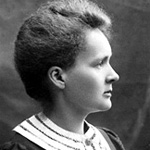 If you have heard of anyone on this list, it’s bound to be Marie Curie, who is one of the most well-known female scientists the world has ever known. She was a pioneer in the study of radioactivity (and even coined the term itself), becoming the first person to win two Nobel Prizes — one in physics and one in chemistry. Curie also discovered two new elements, radium and polonium, but she wasn’t all about research, however. In addition, she also had a notable teaching career, and was the first female professor to work at the University of Paris. Curie would go on to found two research institutions of her own, both of which still operate today.
If you have heard of anyone on this list, it’s bound to be Marie Curie, who is one of the most well-known female scientists the world has ever known. She was a pioneer in the study of radioactivity (and even coined the term itself), becoming the first person to win two Nobel Prizes — one in physics and one in chemistry. Curie also discovered two new elements, radium and polonium, but she wasn’t all about research, however. In addition, she also had a notable teaching career, and was the first female professor to work at the University of Paris. Curie would go on to found two research institutions of her own, both of which still operate today.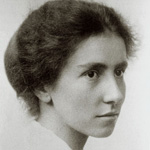 British archaeologist Dorothy Garrod made groundbreaking finds on the Paleolithic era while excavating Palestine with fellow academic Dorothea Bate, leading to a greater understanding of the region’s prehistoric human life. After holding a range of other academic posts, she was finally made a full professor of archaeology at Cambridge in 1939, though equal academic rights and privileges for females would not be extended until 1947. Garrod would go on to work at Cambridge until 1952, and continued to receive many honors, including the Order of the British Empire.
British archaeologist Dorothy Garrod made groundbreaking finds on the Paleolithic era while excavating Palestine with fellow academic Dorothea Bate, leading to a greater understanding of the region’s prehistoric human life. After holding a range of other academic posts, she was finally made a full professor of archaeology at Cambridge in 1939, though equal academic rights and privileges for females would not be extended until 1947. Garrod would go on to work at Cambridge until 1952, and continued to receive many honors, including the Order of the British Empire.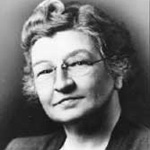 Orphaned at age 12, Edith Clarke used her inheritance to study mathematics and astronomy at Vassar College. Graduating with honors in 1908, she taught and worked for several years before heading to MIT for her master’s degree in electrical engineering — the first degree in the field ever awarded to one of the school’s women. Most of Clarke’s illustrious career was spent working as an engineer for GE, but she ended up appointed to a professorship at Constantinople Women’s College in 1921. By 1945, she earned a position as the first female professor of electrical engineering at the University of Texas.
Orphaned at age 12, Edith Clarke used her inheritance to study mathematics and astronomy at Vassar College. Graduating with honors in 1908, she taught and worked for several years before heading to MIT for her master’s degree in electrical engineering — the first degree in the field ever awarded to one of the school’s women. Most of Clarke’s illustrious career was spent working as an engineer for GE, but she ended up appointed to a professorship at Constantinople Women’s College in 1921. By 1945, she earned a position as the first female professor of electrical engineering at the University of Texas.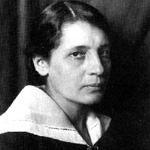 Swedish physicist Lise Meitner researched radioactivity and nuclear physics, and was part of the scientific team that discovered nuclear fission. Which, of course, garnered her colleague Otto Hahn a Nobel Prize, but not her. She hasn’t gone unnoticed to science, however, and the element Meitnerium is named after her. While receiving an assistant professor offer in 1913, Meitner would choose to focus on research until 1926, when she became the first woman in Germany appointed a full professor of Physics. She would work at the University of Berlin until WWII broke out, with Einstein once calling her "the German Marie Curie."
Swedish physicist Lise Meitner researched radioactivity and nuclear physics, and was part of the scientific team that discovered nuclear fission. Which, of course, garnered her colleague Otto Hahn a Nobel Prize, but not her. She hasn’t gone unnoticed to science, however, and the element Meitnerium is named after her. While receiving an assistant professor offer in 1913, Meitner would choose to focus on research until 1926, when she became the first woman in Germany appointed a full professor of Physics. She would work at the University of Berlin until WWII broke out, with Einstein once calling her "the German Marie Curie."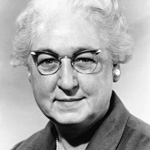 If you’ve ever had a child or been close to someone who has, you’ve likely heard the name of this pioneering woman. Virginia Apgar graduated from Columbia University in 1933 and completed her residency in 1937. She would go on to become a leader in the fields of anesthesiology and teratology, and founded the field of neonatology. She is best known for her development of the Apgar score, a method accessing a newborn baby’s health, but she also made some notable firsts throughout her career. She was named Director of Anesthesiology at Columbia University Medical Center in 1938 (the first woman to hold this position in the US), and would later become the school’s first female full professor in 1949.
If you’ve ever had a child or been close to someone who has, you’ve likely heard the name of this pioneering woman. Virginia Apgar graduated from Columbia University in 1933 and completed her residency in 1937. She would go on to become a leader in the fields of anesthesiology and teratology, and founded the field of neonatology. She is best known for her development of the Apgar score, a method accessing a newborn baby’s health, but she also made some notable firsts throughout her career. She was named Director of Anesthesiology at Columbia University Medical Center in 1938 (the first woman to hold this position in the US), and would later become the school’s first female full professor in 1949.